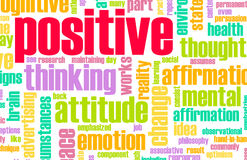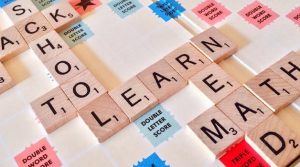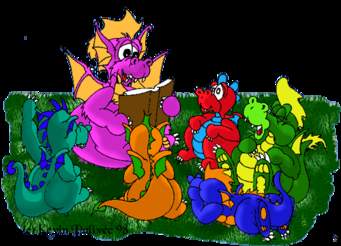
It is very important that children develop oral language and vocabulary skills as part of literacy preparedness. According to Hart and Risley , Meaningful Differences in the Everyday Experience of Young American Children (2002),”in professional families, children heard an average of 2,153 words per hour, while children in working class families heard an average of 1,251 words per hour, and children in welfare families heard an average of 616 words per hour.” By the time these children get to kindergarten there is quite a disparity in the number of words they have heard and acquired, which has a direct impact on their reading readiness. Therefore the development of oral language and vocabulary is crucial in this process.
A Rich Language Environment
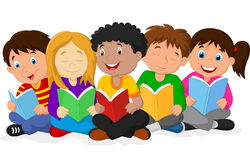
Young children learn language naturally by using it, imitating those around them, and by working through the rules of the language on their own (ex: “ I goed” precedes “I went”). Humans’ brains are wired for talk. However, children require time to develop language through everyday practice within a social context. This process of language acquisition varies from child to child. Some children start speaking and using complex sentences earlier than others. Immersing children in a language rich environment, whether in their mother tongue or the official language, is extremely important no matter how early or how late they start talking. They may not be talking, but they are listening. Having ‘conversations’ with children, before they are talking, teaches them the rules of conversation such as taking turns, paying attention, facial and voice expressions/intonation (asking questions, exclamations)and so on.
Oral Language Components – Relating Sounds to Meanings
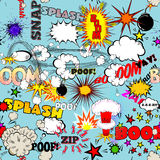
Phonological – it’s about the rules of combining sounds . English speakers understand and pronounce English words and know that some sounds always come at the end of words.
Semantic – the smallest units of meaning – morphemes- that combined with others make up words.
Syntactic – the rules that make possible to combine words into sentences. As soon as a child uses two words together, as in “I happy” she is using a syntactic rule to convey meaning.
Pragmatics – the rules of language use: formal and informal language. Children need to learn the ways of speaking at day care/school. Pragmatic is important because we are perceived by others based on both what we say, how and when we say it. (Reading Rockets article by Celia Genishi “Oral Children’s Oral Language Development”).
www.readingrockets.org is an excellent literacy site for both parents and teachers. On the oral language development part of the site parents can access tip sheets in English and Spanish about topics such as: Nursery Rhymes, Literacy for pre-schoolers, growing readers and much more. On their PBS series, we can find articles such as Roots of Reading for infants and toddlers in a video clip hosted by Fred Rogers. He looks at the earliest stages of literacy and helps parents and other stake holders who can help children get on their literacy journey. The amount of information and guidance on this site is tremendous. I’ve spent many hours on this site.
Peer Learning
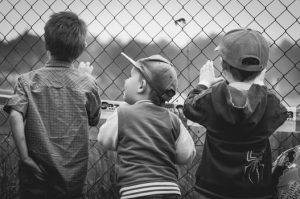
Peer learning is an important part of language development. It is important to give children the opportunity to interact with other children, especially if they are of mixed-age groups.
Adult-Child Conversations
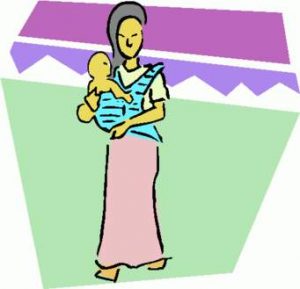
Story time is a great opportunity for adult-child interaction or one sided ‘conversations’. At 9 months old my grandson had a favourite story. At first I didn’t understand why the fussing because I usually read both stories . Then I figured out that the fussing stopped when I read a particular story. He had a favourite story! I saw this behavior again with my granddaughter. Now they both talk (at the ages of 4 and 2 ) so we have conversations about story settings, characters, problems, solutions, feelings while we reread their favourite stories. Of course in this process I must remain faithful to the script… because they know if I skip/change a word or sentence. At age 4 he reads some words of the story as he is developing sight words and also learning phonics, or reads pictures as in ‘see and say’ story books. At age 2 she is into Dr. Seuss’ Green Eggs and Ham and has memorized parts of the story.
It is never to early to start children on the road to literacy in a fun and relaxed way.
With Love and Gratitude
Alda
Source:
www.readingrockets.org/blogs/sounditout


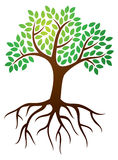
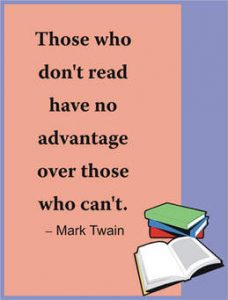

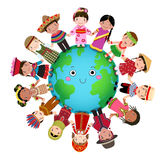

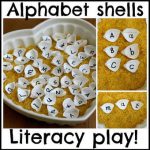 The ABCs
The ABCs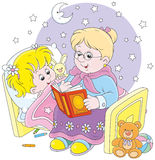 Reading Aloud
Reading Aloud